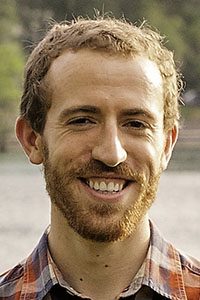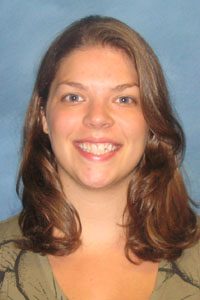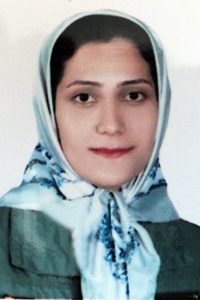
Fundamental Studies of Ultrashort Laser Pulse Interaction with Aerosols
Delivering high intensity ultrashort laser pulses over long distances to irradiate targets has gained interest for various applications since the discovery of a laser filament. Laser filamentation in air produces a cylindrically symmetric self-channeled high intensity beam (~ 5 x 1013 W/cm2) generated by the dynamic balance between the Kerr self-focusing, self-generated plasma defocusing and diffraction. To efficiently deliver this high intensity diffraction-free beam over long distances in the atmosphere, there is a need to understand the changes in the characteristics of the laser beam as it interacts with obstacles present in air such as microscopic dust particles and aerosols. In this talk, I will present a quantitative approach to measure the energy dissipated by an ultrashort filamenting laser pulse during its interaction with a single aerosol and the subsequent effects on both the laser pulse and the aerosol. In addition to this, the impact of the droplet’s position along the radial and longitudinal axes of the beam on its characteristics will also be discussed, leading to the study of filament propagation through multiple aerosols such as fogs and clouds.
Cheonha Jeon received his B.S degree (2009) in optical engineering from University of Rochester, M.S degree (2010) in electrical engineering from Yale University, and is in pursuit of his Ph.D. degree in CREOL. He has worked in the general areas of laser induced plasmas, ultrashort laser systems and associated applications under the supervision of Prof. Martin Richardson. In particular, he has made contribution to the development of a new facility that studies the interaction of ultrashort lasers with aerosols.
Runners-up

Broadband, Widely-Spaced Optical Frequency Combs from Semiconductor Mode-Locked Lasers
In an increasingly connected world, the demand for high speed data is rapidly growing. Optical frequency combs offer an attractive solution to increase our information carrying capacity using the existing infrastructure by serving as a massive number of parallel, coherent data channels. Comb sources based on semiconductor lasers have a number of advantages including low noise operation at multi-gigahertz repetition rates and their ability to operate in different wavelength bands through bandgap engineering. However, semiconductor based combs have to date typically offered narrower bandwidth spectra compared to fiber or solid state based alternatives. We have worked to advance the state of semiconductor combs by measuring the dispersion of our lasers using a novel dual-comb measurement technique we developed. By adding a pulse shaper inside the laser cavity, we can compensate for this dispersion and broaden the output comb spectrum to span an unprecedented 5 THz with 10 GHz line spacing.
Tony Klee received his B.S. degree in optical engineering from Rose-Hulman Institute of Technology in 2010. He then joined CREOL at the University of Central Florida as a Ph.D. student in Dr. Peter Delfyett’s Ultrafast Photonics group. His research focuses on the development and characterization of semiconductor-based optical frequency comb sources for novel detection and signal processing applications. He is the first author of two journal publications and nine conference proceedings.

Sensing with Specialty Optical Fibers
Specialty fiber optic sensors offer solutions to many of the obstacles faced by industries operating in harsh environments, such as high temperature operation, remote interrogation, and immunity to electromagnetic interference. Sensors based on multimode interference in fiber allow for high sensitivity to many environmental changes, while minimizing fabrication cost and complexity.
I will show the design and optimization of a fiber sensor based on multicore fiber, which has high sensitivity, simple fabrication, and the ability to withstand temperatures up to 1000°C. I will also show the sensor’s performance when measuring temperature, strain, acoustic waves, and bending, as well as its integration with a novel fiber optic device for 3D shape sensing. Additionally, several designs of hollow core fiber will be introduced, and their characterization, as well as potential use in fiber optic sensing, will be explored.
Amy Van Newkirk is currently a PhD student in Dr. Axel Schülzgen’s research group. She received her BS in Applied Physics from Grove City College in 2011. Her research is focused on the design and application of specialty optical fibers, primarily for use in sensors. She is the first author of three peer-reviewed journal articles, and has authored or co-authored a total of 22 journal articles and conference proceedings. Amy has received numerous awards from CREOL, UCF, SPIE, as well as a fiber optics company.

Advanced High Power Fiber Lasers and Devices
Fiber lasers and amplifiers have experienced an impressive growth in recent years due to their remarkable power scalability. However, due to the high optical intensity in the core, the performance of the high power fiber lasers is limited by detrimental nonlinear processes. To mitigate nonlinear effects large mode area (LMA) fibers that exhibit a mode field diameter (MFD) larger than 50 micronshave been developed. Unfortunately, LMA fibers are not strictly single mode (SM) which ultimately at high average powers results in appearance of modal instabilities (MI) which leads to sudden degradation of the output beam of a fiber laser or amplifier. In this talk, I will present a novel design of a micro-structured SM large pitch, very large-mode-area fiber, featuring simultaneously, an enhanced HOM delocalization and efficient preferential gain in active fibers by breaking the cladding symmetry to improve the MI threshold in high power fiber lasers and amplifiers.
Zahoora Sanjabi is a PhD student in Dr. Amezcua’s Microstructured fibers and devices group since 2012. Her research interests include fiber design, fabrication and characterization for variety of different applications including lasers, sensors, communications, high power delivery and medical and biotechnology. She has published 14 journal and conference papers and received the “Frances Townes Fellowship Award” in 2012.